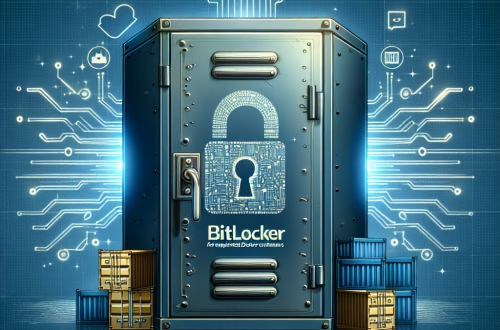How TPM 2.0 Enhances Disk Encryption Security in Windows Environments
Summary
This article explores the technical impact of TPM 2.0 on disk encryption in Windows systems, focusing on BitLocker. It covers core functionality, integration with UEFI/Secure Boot, security implications, and common issues. Best practices for configuration, troubleshooting, and risk mitigation are detailed to ensure robust data protection.
Introduction
Trusted Platform Module (TPM) 2.0 is a hardware-based security component critical for modern disk encryption, particularly with BitLocker in Windows 10/11 and Windows Server 2016+. It provides secure cryptographic key storage, hardware-enforced pre-boot integrity verification, and resistance to offline attacks. Unlike software-only encryption, TPM 2.0 ensures keys never leave the protected hardware boundary, significantly reducing attack vectors.
What Is How TPM 2.0 Affects Disk Encryption?
TPM 2.0 (ISO/IEC 11889 standard) is a cryptographic processor that securely generates, stores, and manages keys used for disk encryption. In Windows BitLocker deployments, it acts as a Root of Trust for Storage (RTS) and Root of Trust for Reporting (RTR). The TPM interacts with UEFI firmware during boot to validate system integrity measurements (Platform Configuration Registers – PCRs) before releasing the Full Volume Encryption Key (FVEK). This process ensures decryption only occurs if the boot environment meets predefined security policies.
How It Works
TPM 2.0 integration with BitLocker follows a strict chain of trust:
- Key Generation: During BitLocker initialization, the TPM generates a Storage Root Key (SRK) and Volume Master Key (VMK). The VMK encrypts the FVEK, which performs real-time disk encryption.
- Sealing Process: The VMK is “sealed” to 24 TPM Platform Configuration Registers (PCRs) that record boot components (UEFI, bootloader, etc.). PCRs use SHA-256 hashing (mandatory in TPM 2.0).
- Pre-Boot Validation: At boot, the TPM recalculates PCR hashes. If they match the sealed values, the VMK is released to decrypt the FVEK.
- Secure Boot Integration: UEFI Secure Boot verifies signed boot components, ensuring only trusted code executes before the OS loads.
Common Issues and Fixes
Issue 1: TPM Not Detected During BitLocker Setup
Description: Windows fails to initialize BitLocker with error “This device can’t use a Trusted Platform Module.” Common causes include UEFI settings (TPM disabled/legacy mode) or firmware TPM (fTPM) conflicts.
Fix: Enable TPM 2.0 in UEFI settings, disable “Legacy Mode,” and clear TPM ownership (via tpm.msc). For AMD fTPM systems, update to AGESA 1.2.0.7+ firmware.
Issue 2: Recovery Mode Triggered After Hardware Changes
Description: BitLocker enters recovery mode after minor hardware changes (e.g., GPU upgrade) due to PCR 10/11 changes (measures device connections).
Fix: Suspend BitLocker (Suspend-BitLocker PowerShell cmdlet) before hardware changes, then resume. Adjust Group Policy to exclude non-critical PCRs (not recommended for high-security environments).
Issue 3: PCR Validation Failures After Software Updates
Description: Windows updates may alter boot files (PCRs 7-9), causing boot failures if a TPM-bound key is used without recovery authentication.
Fix: Ensure recovery keys are securely stored. Use manage-bde -protectors to add a recovery password before major updates.
Best Practices
- Enable Secure Boot: Mandatory for PCR 7 validation (secure boot policy) to prevent bootkit injection.
- Use TPM + PIN: Configure multi-factor authentication (TPM + 6-digit PIN) via Group Policy to mitigate physical attacks.
- Validate PCR Bindings: Audit TPM PCR selections (
tpmtool getdeviceinformation) to exclude volatile measurements like PCR 14 (Reserved). - Backup Recovery Keys: Store in Azure AD, Active Directory, or offline secure vaults.
- Firmware Updates: Regularly update UEFI/TPM firmware to patch vulnerabilities like CVE-2023-1017 (TPM buffer overflow).
Conclusion
TPM 2.0 provides hardware-rooted security for disk encryption, making BitLocker resilient to tampering and cold boot attacks. Proper configuration requires alignment of UEFI settings, PCR policies, and recovery safeguards. Organizations must prioritize firmware management and multi-factor authentication to counter evolving threats like firmware-level malware.
People Also Ask About
Can BitLocker use TPM 2.0 without Secure Boot?
Yes, but this weakens security. Without Secure Boot, PCR 7 (secure boot policy) isn’t validated, allowing unsigned bootloaders to execute. Microsoft recommends enabling Secure Boot for TPM + PCR 7 binding in Windows 11.
Does TPM 2.0 work with legacy BIOS systems?
No. TPM 2.0 requires UEFI firmware. Legacy BIOS lacks support for critical features like Secure Boot and PCR measurements necessary for modern disk encryption.
How to migrate BitLocker keys from TPM 1.2 to 2.0?
Decrypt the drive (Disable-BitLocker), clear TPM 1.2 via UEFI, enable TPM 2.0, then re-encrypt. Ensure system firmware supports TPM 2.0 before migration.
Can TPM 2.0 be bypassed by attackers?
Physical attacks like Thunderclap (DMA access) or TPM reset via SPI flash (requires physical disassembly) can compromise keys. Mitigate with TPM + PIN policies and disabling unused hardware ports.
Other Resources
- Microsoft TPM Documentation – Official TPM configuration guidance for Windows systems.
- NIST SP 800-193 – Platform Firmware Resiliency Guidelines for TPM implementations.
Suggested Protections
- Enforce TPM 2.0 + PIN authentication via Group Policy
- Regularly audit PCR bindings and update UEFI/TPM firmware
- Disable Thunderbolt/DMA ports on sensitive devices
- Implement Windows Defender System Guard for dynamic root-of-trust
- Monitor TPM event logs via Windows Event Viewer (Logs/Applications and Services Logs/Microsoft/Windows/Tpm)
Expert Opinion
TPM 2.0 significantly raises the bar against firmware attacks but isn’t infallible. Organizations should treat it as one layer in a defense-in-depth strategy. Recent vulnerabilities in firmware TPMs (fTPM) highlight the need for rigorous patch management. Balance security with usability—TPM+PIN policies are effective but add operational overhead. Future threats will likely target the TPM-UEFI interface, necessitating hardware isolation improvements.
Related Key Terms
#TPM #affects #disk #encryption





